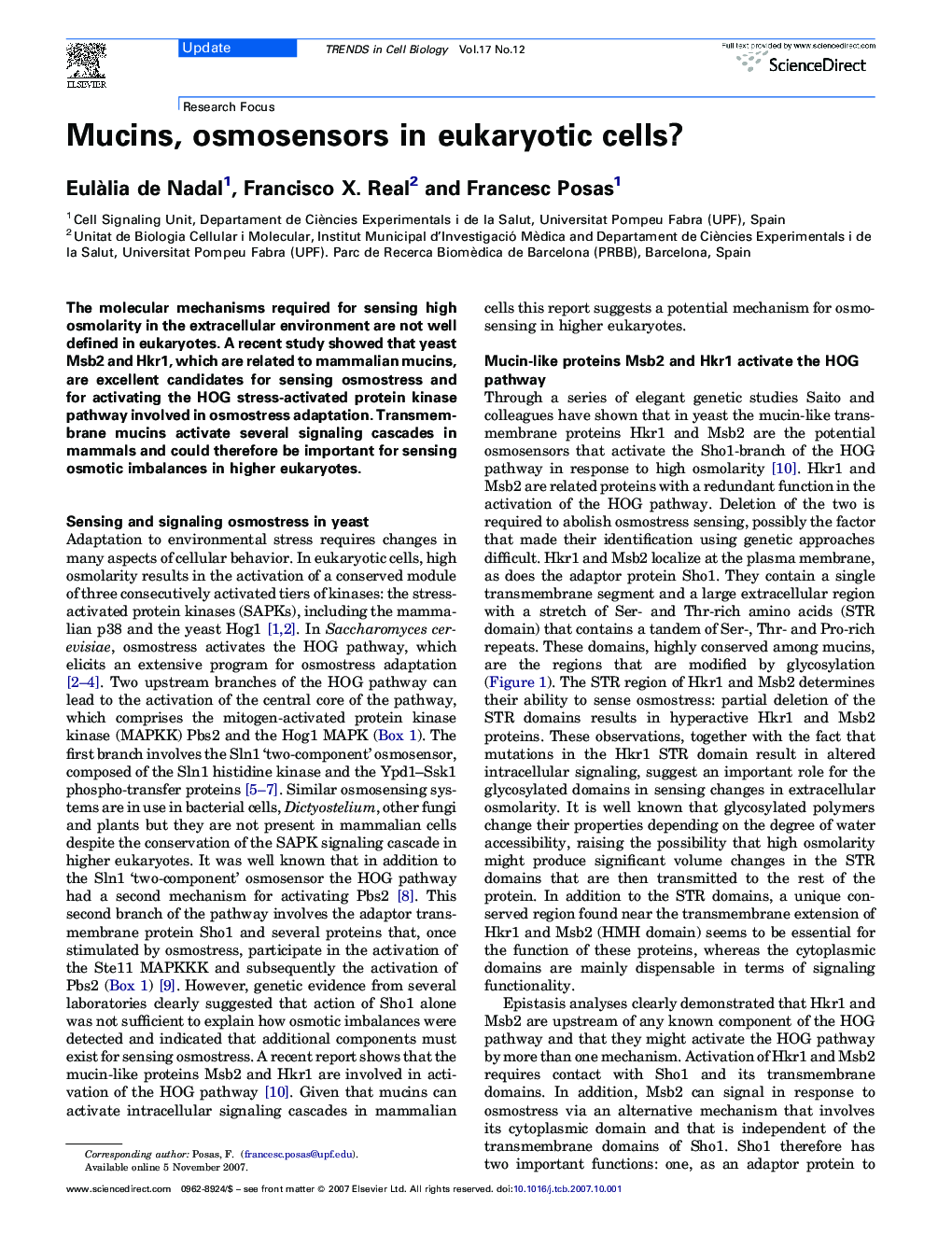| Article ID | Journal | Published Year | Pages | File Type |
|---|---|---|---|---|
| 2205212 | Trends in Cell Biology | 2007 | 4 Pages |
Abstract
The molecular mechanisms required for sensing high osmolarity in the extracellular environment are not well defined in eukaryotes. A recent study showed that yeast Msb2 and Hkr1, which are related to mammalian mucins, are excellent candidates for sensing osmostress and for activating the HOG stress-activated protein kinase pathway involved in osmostress adaptation. Transmembrane mucins activate several signaling cascades in mammals and could therefore be important for sensing osmotic imbalances in higher eukaryotes.
Related Topics
Life Sciences
Biochemistry, Genetics and Molecular Biology
Cell Biology
Authors
Eulàlia de Nadal, Francisco X. Real, Francesc Posas,
